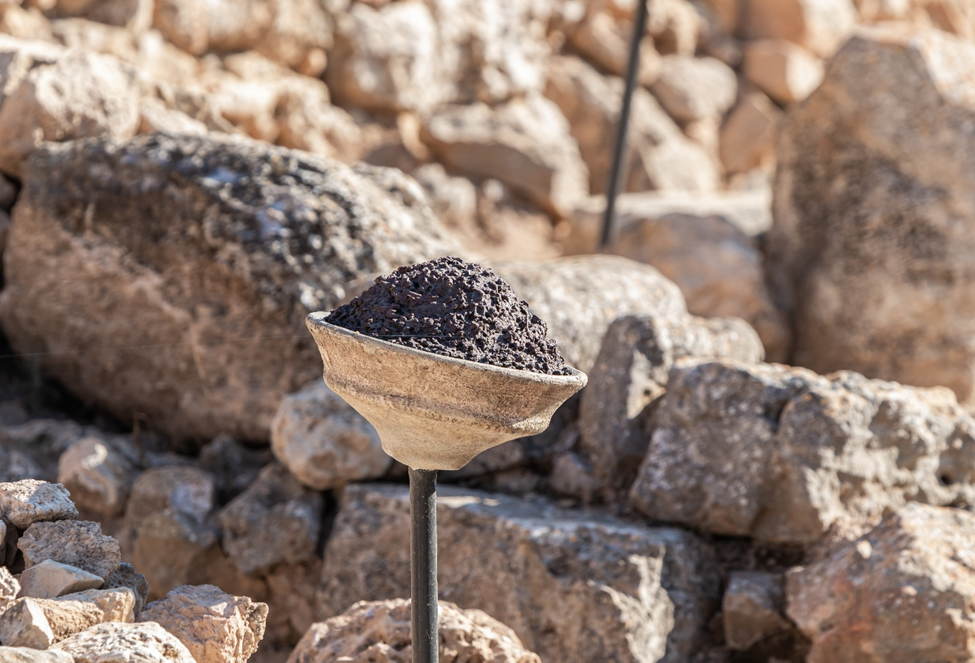“This man would ascend from his city year after year to bow down and to bring offerings to G-d, Master of Legions, in Shiloh (1 Samuel 1:3).”
Shiloh: The Heartbeat of a Nation
As we saw in Part 1, Shiloh wasn’t just another ancient ruin or a scenic hilltop along an old trade route. It was the spiritual heartbeat of Israel for nearly four centuries. But to truly understand why this place mattered so deeply, we need to step into the biblical era

Shiloh: More Than a Structure
When the Children of Israel entered the Land, they brought with them the Tabernacle, the portable sanctuary they had carried and assembled for 40 years through their travels in the wilderness. For the first 14 years in Israel, the Tabernacle continued to be a temporary structure in Gilgal. But in Shiloh, something changed. For the first time, they set down roots—not only in the land but spiritually.

According to Jewish tradition, when the Tabernacle was established in Shiloh, it rested upon a foundation of stone yet still retained its original fabric coverings. This marked a profound transition toward permanence, while the tent-like roof stood as a powerful reminder that spiritual humility and reliance on God must endure, even in times of stability and settlement. Later, when the Holy Temple was built in Jerusalem, it would be constructed entirely of stone—symbolizing the ultimate establishment of a permanent dwelling for the Divine Presence.

How the Daughters of Shiloh Saved a Tribe: The Aftermath of the Civil War in Gibeah
Shiloh’s story becomes even more meaningful when we remember what happened after the civil war in Gibeah, Benjamin’s city (see Judges 19–21). The tribe was almost wiped out—only 600 men remained—but the other tribes had sworn not to give their daughters in marriage to Benjamin, a move they later regretted. So how could Benjamin survive? During the festival at Shiloh, young women danced in the vineyards, and the Benjaminites’ were allowed to “grab” wives from among them. Jewish commentators ask: how could these marriages be valid if the women didn’t explicitly agree to it? In Judaism, a forced marriage is invalid—both husband and wife must consent. The answer is that all these marriages were with the women’s consent. When the Torah says “grab,” it means without asking the father first. Although not technically mandatory by Torah Law, at that time, it was considered improper for a man to marry a woman without first seeking her father’s blessing. But here, the fathers stayed silent and did not object, so they were not seen as breaking their oath by giving their daughters away. Interestingly, the Torah mentions “Shiloh” twice in the verse (in Judges 21:21), and the sages explain this as a hint to the girls’ special righteousness—they had grown up near the Tabernacle, surrounded by holiness and purity. Because of this, they were uniquely worthy to help preserve an entire tribe. Today, Tu B’Av, the 15th of Av on the Jewish calendar, celebrates not only love and unity but also the faith and holiness that ensured Israel’s future in the vineyards of Shiloh.

Three Times a Year at Shiloh: A Nation United in Faith
Before the Temple was built, Shiloh was the place where the Jewish people came together three times a year for the festivals of Passover, Shavuot, and Sukkot. The Torah commands this in Exodus 23:17 and Deuteronomy 16:16: “Three times a year all (of) you …. shall appear before the L-rd your G-d.” This wasn’t just a trip—it was a powerful experience that brought the whole nation together. Take Elkanah, for example, who faithfully made the journey to Shiloh with his family to offer sacrifices and pray (see 1 Samuel 1). These visits were a chance for Israel to connect with G-d in a real way and renew their commitment to Him. Right from the start, this mitzvah (commandment) of pilgrimage kept the people’s relationship with G-d alive, strong, and full of hope.

One of the most unforgettable figures connected to Shiloh is Hannah, a woman whose heartfelt prayers changed the way we connect with G-d forever. Her story is not just about personal struggle but about the power of sincere prayer and faith in action. Hannah’s words would inspire generations, teaching us that even in silence and pain, our voices matter deeply. But this is just the beginning of her incredible journey in Shiloh.
-To Be Continued…
For a sample tour itinerary which can include experiencing biblical Shiloh, click here. To view his sample Gaza Envelope tour itinerary, click here.
Nosson Shulman is a journalist and Licensed Tour Guide in Israel specializing in Biblical tours. To allow tourists to experience Israel during the Corona era, he created the new hit Israel tour video series which brings Israel to the home of viewers by simulating actual tours. To check out his free sneak preview tour videos, click here. To view sample tour itineraries or to inquire about private tour opportunities with a personalized itinerary on your next trip to Israel, click here.




